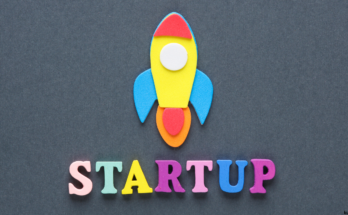Building a successful startup begins with validating your idea, and one of the most effective ways to do this is by creating a Minimum Viable Product (MVP). An MVP allows you to test your concept, gather feedback, and iterate with minimal resources. In this step-by-step guide, we’ll explore the essential stages of creating an MVP that sets your startup on the path to success.
1. Understanding the Purpose of an MVP
Before diving into development, it’s essential to grasp what an MVP is and why it’s crucial.
What is an MVP?
A Minimum Viable Product is the most basic version of your product that solves a core problem for your target audience. It includes only the essential features needed to deliver value to users and test your business idea.
Why Build an MVP?
- Validate Your Idea: Determine if there’s a market demand for your product.
- Save Resources: Minimize time and money spent on unnecessary features.
- Gain Early Feedback: Understand user preferences and pain points.
- Attract Investors: Demonstrate traction and potential for growth.
2. Define Your Problem and Target Audience
Step 1: Identify the Problem
The foundation of any successful startup lies in solving a real problem. Ask yourself:
- What issue does my product address?
- Why is this problem significant to potential users?
- How does my solution stand out from existing alternatives?
Step 2: Know Your Audience
A clear understanding of your target audience is essential for creating a relevant MVP.
- Conduct Market Research: Use surveys, interviews, and online analytics to gather insights about your ideal customers.
- Create Buyer Personas: Develop profiles that represent your target users’ demographics, needs, and behaviors.
3. Outline the Core Features
Step 1: Focus on the Essentials
Identify the core functionality that addresses the main problem. Avoid adding features that don’t directly contribute to solving the problem.
Step 2: Prioritize Features
Use frameworks like the MoSCoW method (Must-Have, Should-Have, Could-Have, Won’t-Have) to categorize features.
- Must-Have: Essential features for the MVP.
- Should-Have: Features that enhance user experience but aren’t critical for launch.
- Could-Have: Features that can be added later.
- Won’t-Have: Features that aren’t necessary for the MVP.
Example
For an MVP of a food delivery app:
- Must-Have: User registration, food ordering, and payment processing.
- Should-Have: Delivery tracking and user reviews.
- Could-Have: Loyalty programs and advanced search filters.
4. Create a Prototype
Step 1: Visualize Your Product
A prototype helps you visualize the user interface (UI) and user experience (UX).
- Use tools like Figma, Adobe XD, or Sketch to create wireframes or clickable mockups.
- Ensure the design is intuitive and aligns with user preferences.
Step 2: Test the Prototype
- Share the prototype with a small group of potential users.
- Gather feedback to identify usability issues or areas for improvement.
5. Develop the MVP
Step 1: Choose the Right Development Approach
- In-House Development: Suitable if you have a technical team.
- Outsourcing: Consider hiring freelancers or an agency if technical expertise is lacking.
- No-Code Tools: Use platforms like Bubble, Webflow, or Glide to build an MVP without coding.
Step 2: Use Agile Development
Adopt an iterative approach to build, test, and refine the MVP. Break down development into sprints, each focusing on a specific set of features.
Step 3: Ensure Quality Assurance (QA)
Test the MVP thoroughly to identify and fix bugs. Focus on functionality, compatibility, and performance.
6. Launch Your MVP
Step 1: Choose the Right Platform
Decide where to launch your MVP based on your target audience:
- Mobile app stores (e.g., Google Play, App Store).
- Web platforms.
- Specific marketplaces (e.g., SaaS platforms like Product Hunt).
Step 2: Build Anticipation
Generate buzz around your MVP launch through pre-launch marketing efforts:
- Create a landing page with a call-to-action (e.g., sign up for early access).
- Leverage social media and email campaigns.
Step 3: Set Realistic Expectations
Communicate clearly that this is a basic version of your product designed for testing and improvement.
7. Collect and Analyze Feedback
Step 1: Engage with Early Users
Encourage users to share their experiences through surveys, reviews, or direct communication.
Step 2: Use Analytics Tools
Track user behavior using tools like Google Analytics, Mixpanel, or Hotjar. Monitor metrics such as:
- User engagement.
- Retention rates.
- Conversion rates.
Step 3: Identify Patterns
Analyze the data to uncover trends, pain points, and opportunities for improvement.
8. Iterate and Improve
Step 1: Prioritize Feedback
Focus on feedback that aligns with your business goals and addresses major user concerns.
Step 2: Implement Changes
- Enhance existing features based on user needs.
- Add new features gradually, ensuring each addition adds value.
Step 3: Test Iterations
Release updates to a small group of users before rolling them out to your entire audience.
9. Scale Your Product
Once your MVP gains traction and meets user expectations, plan for scaling:
- Expand features to attract a broader audience.
- Invest in marketing to increase visibility and acquire more users.
- Secure additional funding if needed to support growth.
10. Common Pitfalls to Avoid
1. Overloading the MVP
Including too many features can dilute the focus and increase development time and costs. Stick to the essentials.
2. Ignoring Feedback
Failing to act on user feedback can result in a product that doesn’t meet customer needs.
3. Rushing the Process
Launching too soon without proper testing can lead to a poor user experience and damage your brand’s reputation.
Conclusion
Building a successful MVP requires a clear focus on solving a specific problem, engaging with your target audience, and being open to feedback and iteration. By following this step-by-step guide, you can create a strong foundation for your startup, validate your idea, and move closer to achieving long-term success.
Remember, the MVP is not the final product; it’s a stepping stone. Use it to learn, grow, and evolve your startup into a business that truly resonates with your customers.




